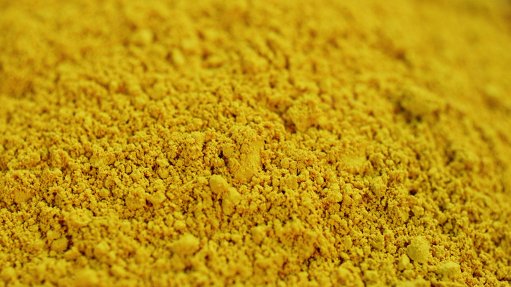
PROMISING PROSPECTS
Past combined resource estimates were that the Mutanga and Dibwe deposits contained more than 20-million pounds of triuranium octoxide
Photo by: Bloomberg
Exploration activities at uranium exploration and development company Denison Mines’ wholly-owned Mutanga project, in Zambia, will focus on generating additional exploration targets through soil and radon sampling, excavator trenching and geological mapping, the company states.
The Mutanga project area consists of two adjoining claims, located in the Southern province of Zambia, about 200 km south of Lusaka and immediately north of Lake Kariba. Mutanga comprises the Mutanga, Dibwe and Dibwe East deposits, as well as several exploration areas.
An excavator-trenching programme at the project was completed during the second quarter of this year, and a programme of surficial geochemistry is scheduled to follow during the second half of the year, the company says in its results for the six months ended June 30.
The exploration expenditures at the Mutanga project during the three months and six months ended June 30, 2015, were $159 000 and $217 000 respectively, the company further reports.
Denison Mines notes: “Explora-tion activity planned for 2015 has been designed to maintain the company’s claims in good standing, while advancing the exploration potential of its assets as part of a strategy to pursue a spin-out or disposal transaction when market conditions permit.”
Uranium was first identified in the Mutanga area in 1957, after a ground survey located five radio- metrically anomalous areas in the vicinity of Bungua Hill, west of Siavonga, according to Denison Mines’ website.
Further exploration in 1958 and 1959 then found low-grade uranium mineralisation that could be followed for over 800 m of strike extent, while confirmation of this uranium mineralisation was further defined in two campaigns after regional airborne magnetic and radio metric surveys had been flown over the area in 1974.
The Geological Survey of Zambia (GSZ) conducted a ground investigation from 1973 to 1977, after which Italian oil company AGIP conducted a second campaign between 1974 and 1984.
The GSZ and AGIP field programmes covered several areas and resource estimations on prospects within the current licence area were also carried out.
The Mutanga and Dibwe deposits were investigated by AGIP during the late 1970s and early 1980s. Considerable exploration was undertaken, including extensive resource drilling. AGIP estimated a combined resource for Mutanga and Dibwe of more than 20-million pounds of triuranium octoxide , a compound of uranium.
The third exploration episode, from 2004 to date, began with the granting of a prospecting licence over AGIP’s main historic uranium prospects to miner Okorusu Fluorspar in 2004.
This was transferred in 2005 to uranium miner OmegaCorp, which drilled eleven drill holes (649 m) at the Mutanga prospect in 2006 to confirm the resource identified by AGIP.
However, Denison Mines acquired Omega in 2007 and subsequently carried out an extensive drilling programme.
The company determined that two of the most promising new prospects are the Dibwe East Zones 1 and 2 within the Dibwe Mutanga corridor area.
Denison Mines also has interests in uranium exploration and development projects in Canada and Namibia.